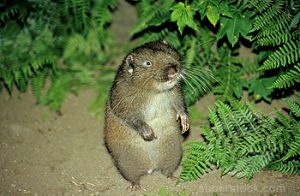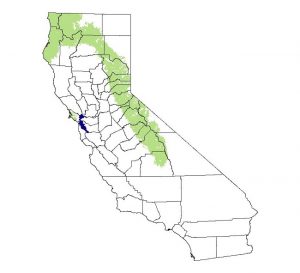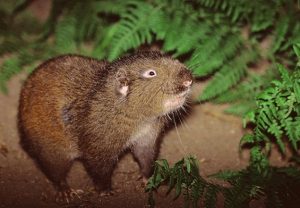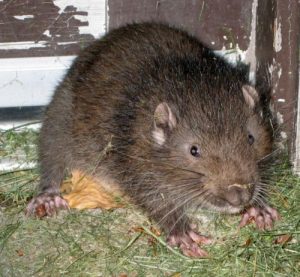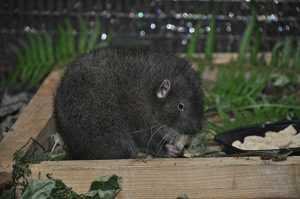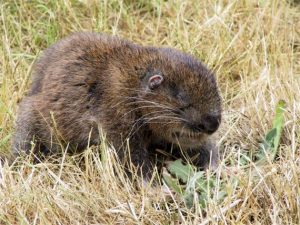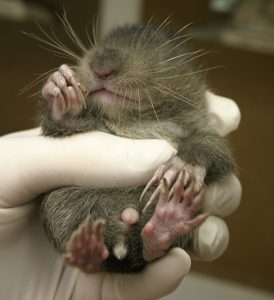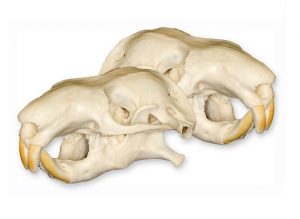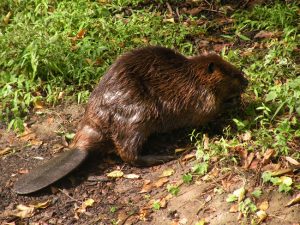Mountain Beaver
Mountain beaver is a species of primitive rodents found in western North America. This stocky burrowing animal is not a true beaver, but was so named because it severs branches and gnaws barks of trees in a way akin to beavers. Characterized by small eyes and ears, rudimentary tail, and curved front claws, the mountain beaver bears resemblance with tailless muskrats and large hamsters.
Scientific Classification
| Kingdom | Animalia |
| Phylum | Chordata |
| Class | Mammalia |
| Order | Rodentia |
| Family | Aplodontiidae |
| Genus | Aplodontia |
| Scientific Name | Aplodontia rufa |
Quick Information
| Other Names | Point Arena Mountain Beaver, Ground Bear, Mountain Boomer, Sewellel Beaver, Giant Mole |
| Subspecies | Seven are recognized |
| Size | Total length: 12-20 in (30-50 cm)
Tail length: 0.39-1.57 in (1-4 cm) |
| Weight | 18-32 oz (500-900 g) |
| Color | Dark brown, white patch underneath each ear; guard hairs are reddish or grayish brown |
| Distribution | From Merritt in British Columbia, along the Olympic, Siskiyou, Cascade, and the Coast Mountains to Rio Dell in California; Mount Shasta to west-central Nevada; also in some parts of the Californian coast |
| Habitat | Coniferous and deciduous forests ranging from sea level to high mountain peaks |
| Sounds/Vocalizations | Booming sounds, whistles; squeals and grinding noise when fighting |
| Lifespan | 5-10 years |
| Diet | Tree seedlings, fleshy herbs, grasses, ferns, cambium of hardwood and coniferous trees; ingest soft fecal pellets for obtaining maximum nutrients |
| Adaptations | Slightly opposable thumbs help them in holding and manipulating food while sitting on their hindquarters; large claws are used for digging and burrowing |
| Diseases and Pests | Infested with fleas and mites, but free of parasitic diseases |
| Number of Offspring | 2-3 young beavers |
| Breeding Season | January-March |
| Gestation Period | 28-30 days |
| Predators | Cougars, coyotes, bobcats, owls, golden eagles |
| Conservation Status | Least Concern |
Behavior
The mountain beavers, generally active during the night, are not known to be very social. They remain close to their burrows and defend their nest sites from invaders. These rodents are powerful diggers, building vast systems of burrows with multiple exits and special compartments for feeding, nesting, as well as storing food, fecal pellets, and wastes. They dig tunnels by scooping soil using their forelimbs and loosening rock and soil with their teeth.
Mating and Reproduction
Before the onset of breeding season, the male reproductive organs undergo some changes, as the bulbourethral glands, prostate, and the testes increase in size. On the other hand, females reaching estrus exhibit swelling of the vulva with an increase in the size of nipples. The estrus cycle in female beavers starts in February or March.
Life Cycle
After gestation, females give birth to a litter of young beavers between February and April. At birth, the babies are pink, hairless, and blind, weighing only 25g. Although their incisors develop at 30 days after birth, the young animals are weaned at 8 weeks. They become sexually matured at 2 years of age.
Interesting Facts
- Unlike other rodent species, the skull of mountain beavers lacks the specialized attachments for masseter muscles.
- They have great senses of touch and smell, but their sight and hearing are poor.
- They are adept at swimming and climbing trees.
- Unoccupied mountain beaver tunnels and burrows are used by voles, moles, salamanders, weasels, and minks.
References:
Published on September 15th 2016 by admin under Coniferous Forest Animals.
Article was last reviewed on 9th May 2023.


